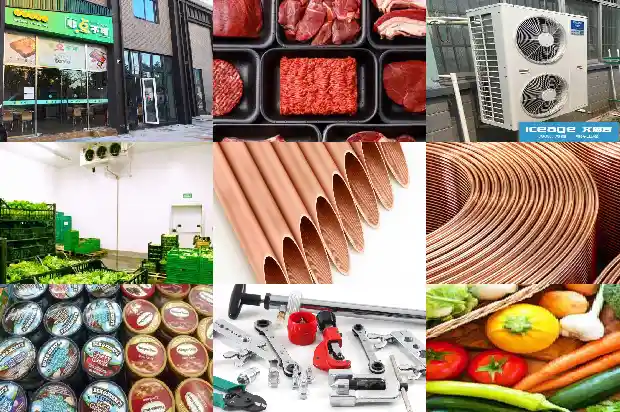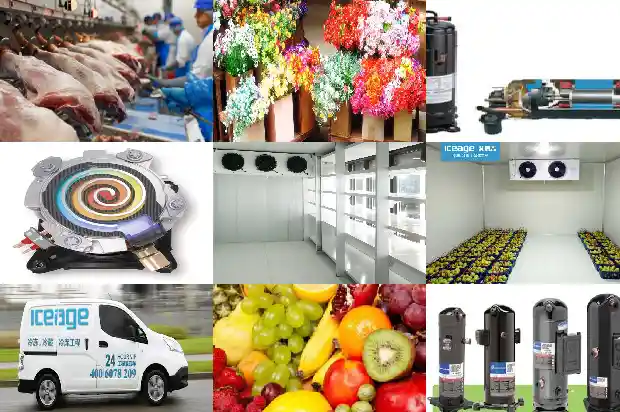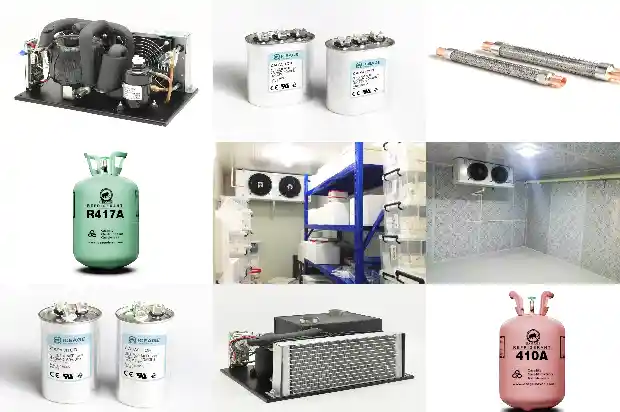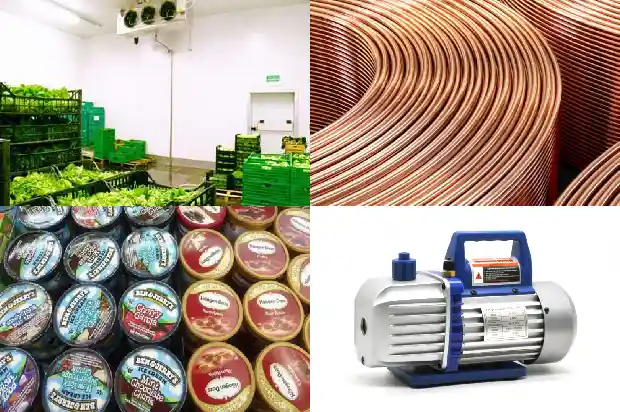Comprehensive! Piping and Installation of VRF (Variable Refrigerant Flow) System
2025-03-04
01 Permissible Length and Drop of Piping
Maximum Length, Maximum Drop between the Outdoor and Indoor Units, Drop between Indoor Units, Length from the First Diverter to the Farthest End
02 Selection of Connection Pipes between Indoor and Outdoor Units
Selection of Refrigerant Pipe Sizes, Sizes of Diverter Pipes
03 Three Principles for Refrigerant Piping Construction: Cleanliness, Dryness, and Air Tightness
04 Materials Required for Installation
Standard Copper Pipes
Maximum Length, Maximum Drop between the Outdoor and Indoor Units, Drop between Indoor Units, Length from the First Diverter to the Farthest End
02 Selection of Connection Pipes between Indoor and Outdoor Units
Selection of Refrigerant Pipe Sizes, Sizes of Diverter Pipes
03 Three Principles for Refrigerant Piping Construction: Cleanliness, Dryness, and Air Tightness
04 Materials Required for Installation
Standard Copper Pipes
- Use degreased and dephosphorized seamless red copper pipes.
- The material and specifications should meet the requirements of the current national standards GB/T 1527 "Drawn Tubes of Copper and Copper Alloys" and GB/T 17791 "Seamless Copper Tubes for Air Conditioning and Refrigeration".
- The wall thickness and hardness of the piping must meet the requirements in the table.
- It should have a factory certificate of conformity and a quality certificate.
Thermal Insulation
It must comply with the national standards and should have a factory certificate of conformity and a quality certificate. Use foam rubber and plastic thermal insulation products with a fire protection rating of Class B1.
05 Tools Required for Installation
Professional installation tools can ensure the air tightness of the copper pipe system, avoiding refrigerant leakage of the equipment caused by poor construction in the future, which may affect the daily use of the air conditioner.
06 Installation Requirements and Methods of Diverters - It should be installed horizontally, and there should be a straight pipe of more than 500mm in front of and behind the diverter before turning.
- The distance between two diverters should be more than 1000mm.
Requirements for Pipe Processing Technology
It is necessary to use a flaring tool for flaring. Using a screwdriver is strictly prohibited! Be sure to install the nut before starting flaring! After completion, check whether the surface of the flare is of uniform color, round, and confirm that there is no "halo", no "sharp edge", and no cracks. Otherwise, start the rework from cutting the pipe!
Copper pipes need to be expanded, welded, and provided with oil traps. - The height of the oil return trap is 10CM or 3-5 times the outer diameter of the copper pipe.
Method of Replacing Nitrogen for Welding Copper Pipes - Nitrogen shielded welding must be used;
- The gauge pressure should be between 0.02MPa and 0.05MPa;
- Continue to fill with nitrogen for protection after welding until it cools down to room temperature;
- At the same time, the length from the welding joint of the piping to the bent part should not be less than the outer diameter of the pipe and not less than 100mm.
Support Requirements for Piping - The piping must be well supported and fixed, and the support distance is 1.0-2.0m.

Piping Flushing - After the piping welding is completed, before connecting to the indoor and outdoor units, carry out piping flushing;
- Use dry nitrogen to blow out the impurities and moisture in the pipeline;
- When the pipeline is relatively long, it should be flushed in sections;
- Use nitrogen at 0.5MPa, block the pipe opening with insulating material. If it cannot withstand the pressure during the pressure increase, release it quickly.
- Use white paper to check whether the flushing is clean when the nitrogen is ejected. Otherwise, repeat the flushing.
Air Tightness Test
Positions Prone to Leakage - When installing the refrigerant piping, at the connection ports with the indoor and outdoor units
- Each welding part in the pipeline
- Damage caused during the placement and transportation of refrigerant pipes
Inspection Steps (Nitrogen pressure test. To prevent equipment damage, the pressure holding time should not be too long) - Pressurize to 3kg/cm2 and maintain for 3 minutes.
- Pressurize to 15kg/cm2 and maintain for 3 minutes.

- Pressurize to 4.0Mpa (when not connected to the outdoor unit) and maintain for 24 hours (Pay attention to the influence of the ambient temperature. The empirical value of the nitrogen pressure change caused by the ambient temperature change: the pressure drops by 1.46Kg when the temperature drops by 10℃; the pressure rises by 1.46Kg when the temperature rises by 10℃).
07 Thermal Insulation of Refrigerant Piping - Prevent condensation and dripping, scalding, and reduce heat loss;
- The thermal insulation material should have the characteristics of heat insulation, flame retardancy, and high temperature resistance;
- All refrigerant piping of the indoor and outdoor units needs thermal insulation (diverter pipes, joints, elbows, etc.), and all gaps must be pasted well;
- The gas pipe and the liquid pipe must be thermally insulated separately, and at the same time, pay attention not to press the thermal insulation cotton tightly;
- The thermal insulation material should meet the requirements: the thermal conductivity λ ≤ 0.
040W/(m·K) at 20℃, and the moisture resistance factor ≥ 80.
- The thickness of the thermal insulation cotton: when the outer diameter D of the copper pipe ≤ 12.7mm, the thickness ≥ 15mm; when the outer diameter D of the copper pipe > 12.7mm, the thickness ≥ 20mm.
08 Fabrication of Condensate Water Pipeline - The thickness of the anti-condensation material should be more than 10mm, and the flame retardant grade should reach Class B1 or above;
- A vent hole should be set at the highest point of the drain pipe. At the same time, it should be noted that for the drainage branch pipe with an auxiliary lifting drainage pump, setting an exhaust hole is strictly prohibited.
- To prevent the drain pipe from sagging downward, it should be assisted and fixed with hangers and other devices every 1 to 1.5m;
- For those that are not insulated as a whole pipe, be sure to re-adhere the cut parts with glue.
09 Condensate Water Flow Test - Test of the natural drainage unit;
- Test of the water pump drainage;
- Test each indoor unit separately;
- Block the drainage port and fill the condensate water pipeline with water.
10 Requirements for Communication Cable Wiring
a. All materials must pass the national CCC certification before they are allowed to be used.
b. When the total distance of the communication cable is within 100 meters, use a 2×0.75mm2 shielded twisted pair.
c. When the total distance of the communication cable is between 100 and 500 meters, use a 2×1.0mm2 shielded twisted pair.
d. When the total distance of the communication cable is greater than 500 meters, consult the factory according to the actual situation.
e. Shielded twisted communication cables must be used.
Key Points for Wiring
The wiring and piping should be numbered and connected correspondingly to prevent cross-connection errors.
11 Vacuum Drying
First Step: Run the vacuum pump for more than 2 hours. If the vacuum degree does not reach below -755mmHg (-100.7kPa) after running for 2 hours, it indicates that there is still moisture or a leak in the pipeline system. At this time, it should be run for another 1 hour. If the vacuum degree still does not reach below -755mmHg (-100.7kPa) after running for 3 hours, check whether there is an air leakage port.
Second Step: When the vacuum degree reaches -755mmHg (-100.7kPa), close the on-off valve, stop the vacuum pump from running, and leave the system for 1 hour. If the vacuum degree does not rise after 1 hour, it is considered qualified. Otherwise, it indicates that there is moisture or an air leakage port in the pipeline.
Precautions (Be sure to measure the vacuum degree with a vacuum gauge):
a: The vacuum pumping operation should be carried out simultaneously from the gas pipe and the liquid pipe. When pumping vacuum, the vacuum pump should not lose power, otherwise the lubricating oil in the vacuum pump may be sucked into the system. To prevent the lubricating oil in the vacuum pump from flowing back, an electronic check valve should be installed...
b: The exhaust volume of the vacuum pump should not be less than 40L/min. Before starting the operation, the vacuum gauge must be checked to ensure that its range can reach below -755mmHg (-100.7kPa).
c: After pumping vacuum and before adding refrigerant, the connection valve should not be replaced to prevent air from entering the system.
12 Refrigerant Addition
Related Articles
- What Issues Should Be Considered in the Installation of a Cold Storage?
- Installation, Inspection and Debugging of the Cold Storage Body
- Installation Precautions and Accessory Selection for Cold Storage Unit
- Matters Concerning the Installation of Parallel Units
- Advanced Guide! Design and Installation of Refrigeration System Pipelines
- What Are the Acceptance Standards for Cold Storage Design and Installation?
- What issues should be noted during the installation of a small - scale cold storage?
- Instructions for Welding and Drainage in the Installation of Refrigeration Equipment Pipelines
- What is the Correct Operation Method of the Distribution Box during Cold Storage Installation?
- What Issues Should Be Noted in Cold Storage Installation and Construction?
- What Special Requirements are There for the Installation of Tea Cold Storage?
- Operating Principle and Standard Installation Steps of Multi - split Systems in Refrigerant Air - conditioning Systems
- How to Identify the Quality of Refrigeration Equipment Installation Materials?
- How to Identify Installation Materials for Refrigeration Equipment
- Knowledge, Installation and Maintenance of Cold Storage Systems
- Precautions for the Installation and Use of Water Flow Switches
- What safety measures should be paid attention to during the installation of cold storage?
- What are the precooling methods after the installation of cold storage?
